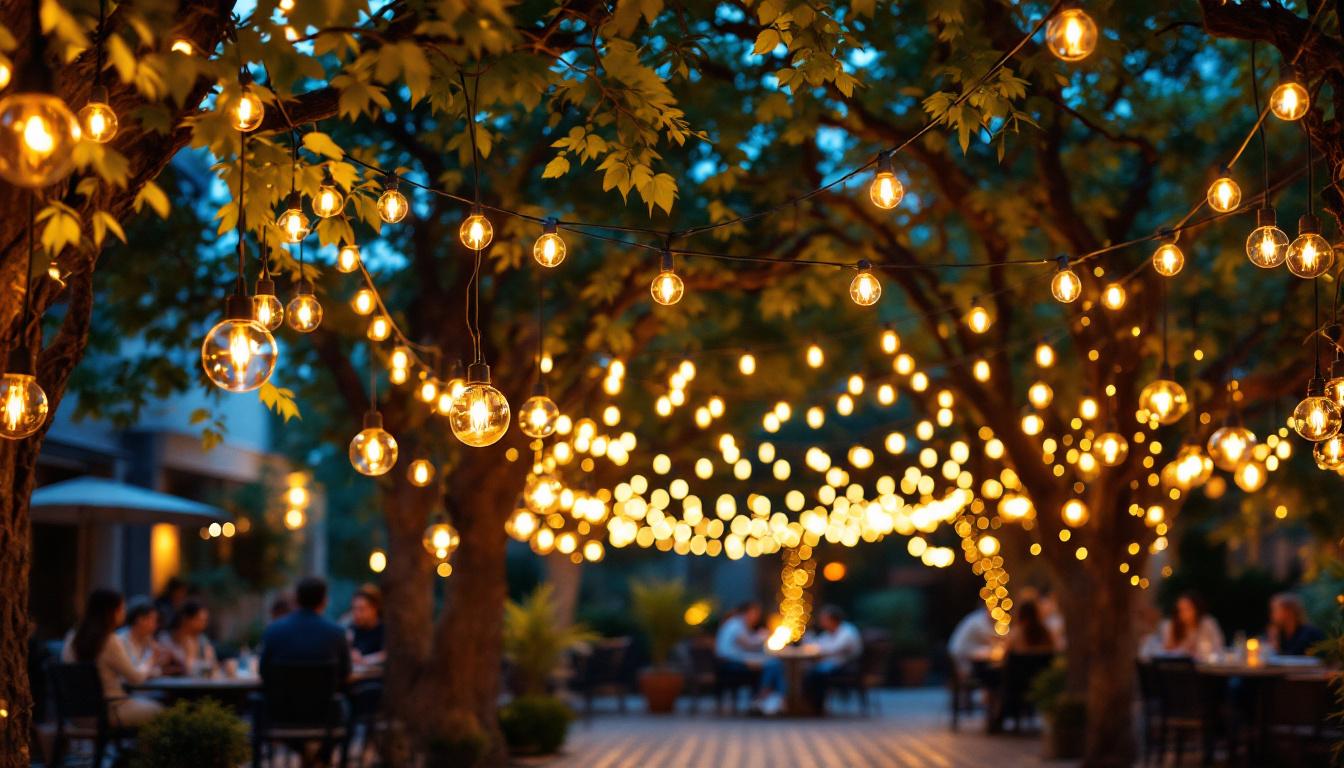
As a lighting contractor, mastering the art of changing a fluorescent light fixture is essential for delivering quality service to clients. Fluorescent lights are commonly used in both residential and commercial settings due to their energy efficiency and longevity. However, when it comes time to replace or upgrade these fixtures, having the right knowledge and resources can make all the difference. This article provides comprehensive guidance on how to change a fluorescent light fixture, along with valuable resources to enhance your skills.
Fluorescent light fixtures operate by passing an electric current through a gas, which in turn produces ultraviolet light. This UV light then excites a phosphor coating inside the fixture, resulting in visible light. Understanding how these fixtures work is crucial for any lighting contractor, as it allows for more informed decisions during installation and replacement.
A typical fluorescent light fixture consists of several key components, including the ballast, tubes, and reflectors. The ballast regulates the current to the tubes, while the tubes emit light. Reflectors help direct the light output for optimal illumination. Familiarity with these components not only aids in the replacement process but also enables contractors to troubleshoot any issues that may arise. Additionally, it’s important to note that ballasts can be either magnetic or electronic, with electronic ballasts generally offering better energy efficiency and a longer lifespan. Understanding the differences between these types can significantly impact the performance and maintenance of the fixtures.
There are various types of fluorescent fixtures, including surface-mounted, recessed, and pendant fixtures. Each type has its own installation requirements and considerations. For instance, surface-mounted fixtures are often easier to install, while recessed fixtures may require more intricate ceiling modifications. Understanding the differences between these types is essential for selecting the right fixture for a specific application. Moreover, pendant fixtures can add an aesthetic appeal to spaces, making them a popular choice in both commercial and residential settings. Their versatility allows them to be used in various environments, from kitchens to office spaces, providing not just illumination but also a design element that can enhance the overall ambiance of the room.
When considering fluorescent fixtures, it’s also vital to take into account the color temperature and CRI (Color Rendering Index) of the bulbs used. Fluorescent lights come in a range of color temperatures, from warm white to cool daylight, which can significantly affect the mood and functionality of a space. A higher CRI means that colors will appear more vibrant and true to life, making it particularly important in settings like art studios or retail spaces where color accuracy is crucial. By understanding these nuances, contractors can better advise their clients on the most suitable fluorescent lighting options to meet their specific needs and preferences.
Before embarking on the task of changing a fluorescent light fixture, it’s important to gather the necessary tools and materials. Having everything on hand will streamline the process and minimize downtime. Proper preparation not only saves time but also reduces the risk of errors during installation, ensuring a smooth transition from the old fixture to the new one.
The tools required for changing a fluorescent light fixture typically include a screwdriver, wire cutters, wire connectors, and a voltage tester. A ladder may also be necessary for reaching high fixtures. Investing in high-quality tools can enhance efficiency and ensure safety during the installation process. For instance, a sturdy ladder with a non-slip surface will provide the necessary stability while you work at heights, reducing the likelihood of accidents. Additionally, a voltage tester is an indispensable tool that helps confirm that the power is off before you start working, providing peace of mind and safeguarding against electrical shocks.
In addition to tools, the right materials are crucial. This includes the new fluorescent fixture, compatible bulbs, and any additional wiring or connectors that may be needed. Always ensure that the new fixture meets the specifications required for the installation location, including wattage and size. It’s also wise to consider the type of bulbs you will be using; for example, energy-efficient LED fluorescent replacements can significantly reduce energy consumption and extend the lifespan of your lighting system. Furthermore, if you’re replacing an older fixture, you might want to check for any outdated wiring or components that may need upgrading to comply with current safety standards, ensuring that your installation is both safe and efficient.
Safety is paramount when working with electrical fixtures. Before starting any installation or replacement, it is essential to take appropriate safety precautions to protect both yourself and your clients.
Before beginning work, always turn off the power to the fixture at the circuit breaker. This will prevent any accidental shocks and ensure a safe working environment. Use a voltage tester to confirm that the power is indeed off before proceeding.
Wearing appropriate PPE, such as safety goggles and gloves, can provide an additional layer of protection. This is especially important when handling glass tubes, which can break and pose a risk of injury. Ensuring that all safety measures are in place will help create a secure working environment.
Now that the necessary preparations have been made, it’s time to dive into the step-by-step process of changing a fluorescent light fixture. Following these guidelines will ensure a smooth and efficient installation.
Begin by carefully removing the old fluorescent fixture. This typically involves unscrewing the fixture from the ceiling and disconnecting the wiring. Take note of how the fixture is wired, as this will aid in connecting the new fixture. If necessary, take photos for reference.
Once the fixture is removed, disconnect the wiring by unscrewing the wire connectors. Be cautious not to damage the existing wiring, as this can complicate the installation of the new fixture. If the wires are frayed or damaged, it may be necessary to replace them before proceeding.
With the old fixture removed and the wiring prepared, it’s time to install the new fluorescent fixture. Begin by connecting the wiring according to the manufacturer’s instructions. Typically, this involves connecting the black (hot) wire to the black wire on the fixture, the white (neutral) wire to the white wire, and grounding the fixture as necessary.
Once the wiring is connected, secure the new fixture to the ceiling using screws or mounting brackets provided. Ensure that the fixture is level and properly aligned. This step is crucial for both aesthetics and functionality.
After securing the fixture, insert the fluorescent bulbs into their sockets. Make sure they are properly seated and locked in place. This will ensure optimal performance and longevity of the bulbs.
Once everything is securely in place, restore power to the circuit at the breaker. Turn on the fixture to test its functionality. If the light does not turn on, double-check the wiring connections and ensure that the bulbs are functioning properly.
Even experienced contractors may encounter challenges when changing fluorescent light fixtures. Understanding common issues and their solutions can help mitigate problems and ensure a successful installation.
Flickering lights can be a common issue with fluorescent fixtures. This may be caused by a faulty ballast, loose wiring, or incompatible bulbs. To resolve this, check the ballast for any signs of damage and ensure that all connections are secure. If the problem persists, replacing the ballast may be necessary.
Using the wrong type of bulb can lead to performance issues. Always verify that the new bulbs are compatible with the fixture and meet the required wattage. If unsure, consult the manufacturer’s specifications or seek advice from a lighting supplier.
A crooked fixture can detract from the overall appearance of a space. If the fixture appears unlevel, double-check the mounting brackets and adjust as necessary. Ensuring that the fixture is properly aligned during installation will prevent this issue.
To further enhance skills and knowledge in changing fluorescent light fixtures, lighting contractors can benefit from various resources. These include online tutorials, industry publications, and professional organizations.
Numerous online platforms offer video tutorials and step-by-step guides for changing fluorescent fixtures. Websites such as YouTube feature content from experienced contractors who share their techniques and tips. These visual resources can be invaluable for visual learners and those seeking practical demonstrations.
Staying informed about the latest trends and technologies in lighting is crucial for contractors. Industry publications often provide articles, case studies, and product reviews that can enhance knowledge and skills. Subscribing to relevant magazines or online newsletters can keep contractors updated on best practices.
Joining professional organizations, such as the National Electrical Contractors Association (NECA) or the International Association of Lighting Designers (IALD), can offer networking opportunities and access to educational resources. These organizations often host workshops, seminars, and conferences that can further develop a contractor’s expertise.
Changing a fluorescent light fixture is a fundamental skill for lighting contractors. By understanding the components, gathering the right tools, and following safety precautions, the process can be executed smoothly. Additionally, being aware of common challenges and utilizing available resources can enhance a contractor’s proficiency in this area. Mastering the art of changing fluorescent fixtures not only improves service quality but also builds trust and credibility with clients.
Ready to take your lighting projects to the next level? LumenWholesale is your go-to source for spec-grade lighting products that combine quality with unbeatable wholesale value. Say goodbye to local distributor markups and hello to a vast selection of reliable, high-performance lighting essentials that meet the highest industry standards. With free shipping on bulk orders, you can stock up on everything you need without the worry of hidden fees. Elevate your service offerings and delight your clients with the best in lighting solutions. Discover the perfect blend of quality, affordability, and convenience at Wholesale Lighting at the Best Value.

Discover how solar-powered landscape lights can transform your outdoor spaces into stunning, eco-friendly environments.

Discover why lighting contractors should prioritize outdoor hang lights in their projects.

Discover how LED technology is revolutionizing the lighting industry, offering contractors a sustainable and cost-effective alternative to fluorescent tubes.

Discover why purchasing ballasts and drivers in bulk from local distributors might not be the best choice.